
May 31, 2011
Modern Maria Clara
Since I mentioned Spanish colonial era clothes yesterday, here is another modern interpretation of the Maria Clara—a style of women's dress now considered formalwear named after the fiancé of the main protagonist of Jose Rizal's novel "Noli Me Tangere." Maria Clara would have loved the elaborate lace and pattern, but I doubt if she would have been comfortable with Eddie Castro's slim fit and starkly graphic colors.


May 30, 2011
Mixed up eras
The mural of a jeepney, an invention after the Philippine-American war, on the wall of the park fronting the Quirino Grandstand has Philippine National Hero Jose Rizal as the driver, and men and women in Spanish colonial era clothes as the passengers. I am sure that they represent other historical figures of the Philippine Revolution, but I wasn't able to get close enough to see.
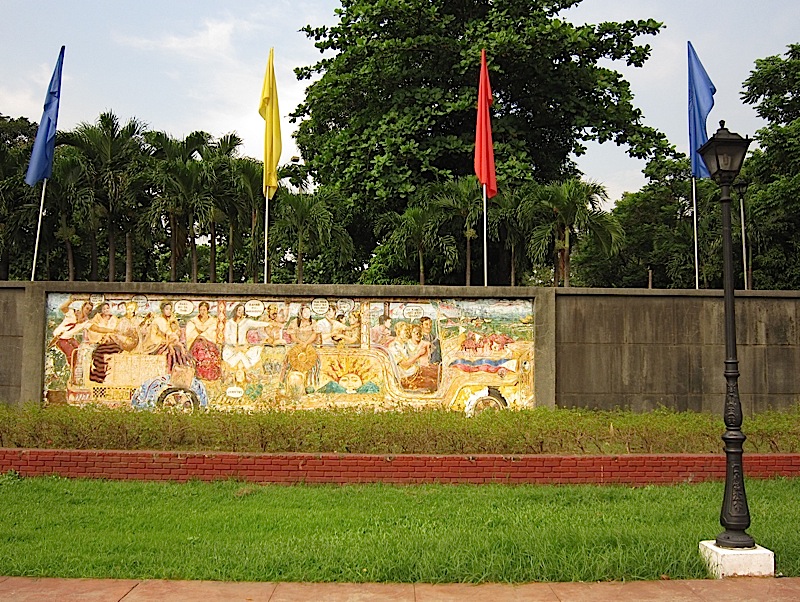

May 29, 2011
The worker
Saint Joseph, the carpenter, the worker and the earthly father of Jesus, lends his name to San Jose Major Seminary, a diocesan seminary located inside the Loyola Heights campus of Ateneo de Manila University. It is under the Roman Catholic Diocese of Cubao but many of its teachers are Jesuits.
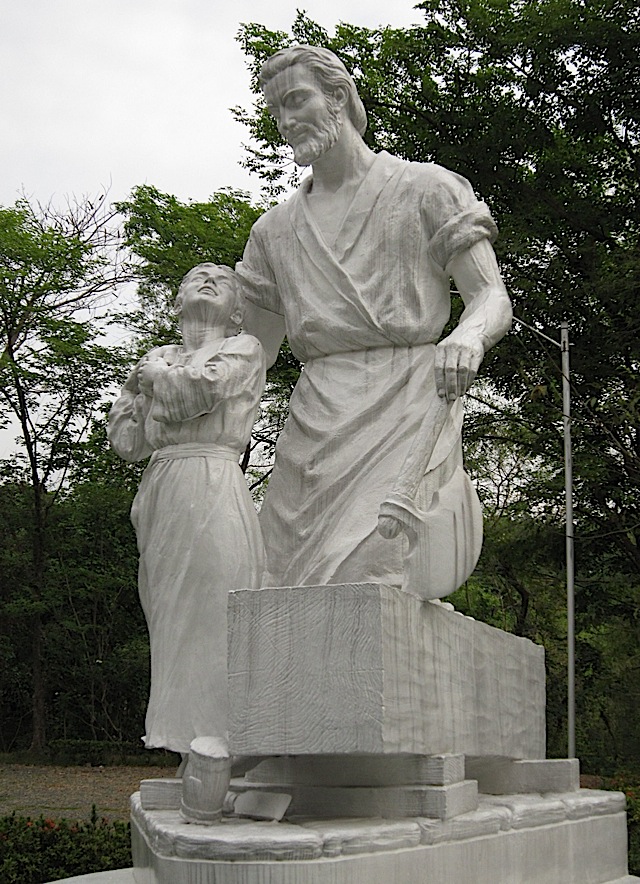

May 28, 2011
Green on green
The open-air pavilion beside the pond in Rizal Park's Chinese Garden.



See what's reflecting what at James' Weekend Reflections.

May 27, 2011
Heart's beat
Kontra-GaPi, short for Kontemporaryong Gamelan Pilipino (Contemporary Filipino Gamelan), is the University of the Philippines' resident ethnic music and dance ensemble. I am always happy to see young ones taking an interest in preserving our cultural heritage, whatever the form and whatever the influence. Gamelan music also happens to be one of the few musical genres that will get me running out of my office no matter how busy I am.


May 26, 2011
Crunch, crunch
Tokwa is what we call firm tofu, and when I was a child, it was the only kind of tofu that I knew. Because of its firmness, it can be fried without it crumbling. Pino Resto Bar's vegetarian Tokwa't Tokwa (Tokwa't Baboy is tokwa and pork, which is popular as bar chow in Manila) is exceptionally crunchy and served with fried rice, a leaf of pechay, chili mayo, and a dipping sauce made of soy sauce and vinegar into which you can squeeze the calamansi and add the onion bits.


May 25, 2011
Third
The son of Francisco Ortigas (Don Paco), Francisco Jr. (Don Paquito), was the president of Ortigas and Company from 1935 to 1998, and it was he who led the development of Hacienda de Mandaloyon into what is now some of the busiest areas of the cities of Pasig, San Juan, Mandaluyong and Quezon. Don Paquito's son Rafael also became a president of the company and he established its corporate social responsibility arm, the Ortigas Foundation. I couldn't find anything about him, but I assume that the third person in this third relief at the Ortigas Park, Joaquin Ramirez, was also a president of Ortigas and Company.


Posted by
Hilda
9 comments:
Labels:
art,
night,
park,
Pasig City,
people
May 24, 2011
Limited partnership
The company that developed Hacienda de Mandaloyon (see yesterday's post) into what is now Greenhills and Ortigas Center was incorporated as a limited partnership named Ortigas, Madrigal y cia., S. en C. (sociedad comanditaria por acciones) in 1931. There were several changes in the partnership between the 1920 sale and its incorporation, and in 1931, the company's partners were Francisco Ortigas, Vicente Madrigal, B.C.M. Johnston, Fulgencio Borromeo, Clyde A. Dewitt and Manuel L. Quezon.


Posted by
Hilda
3 comments:
Labels:
art,
history,
night,
park,
Pasig City
May 23, 2011
Hacienda
The commercial, residential and shopping complexes that are now Greenhills and Ortigas Center, which straddle four cities in Metro Manila, began as part of the estate of the Augustinian Order in the Philippines. The religious order sold 4,033 hectares to a group of prominent Spanish-Filipino businessmen in 1920 who called it Hacienda de Mandaloyon (or Mandaloyong). This relief map of the origins of the area—and the history of the company that founded it—is in the tiny Ortigas Park.


Posted by
Hilda
8 comments:
Labels:
art,
history,
night,
park,
Pasig City
May 22, 2011
New life?
According to its website, the architecture of the five-story Ascension Columbary in Quezon City is supposed to "suggest a heavenly ascent due to its unique form patterned after a Bishop's miter." When we asked for directions to the place, however, people in the neighborhood told us "yung mukhang itlog" (the one that looks like an egg). To the man on the street—and this blogger on the sidewalk—it does look like an egg, one with a vertical crack down its middle.


May 21, 2011
Guardians
Two buffaloes flank the steps leading to the Quirino Grandstand in Rizal Park. The carabao (Bubalus bubalis carabanesis), with its long curved horns, is a domesticated water buffalo native to Southeast Asia. It is a precious farm animal, used to pull plows and carts. It is also a source of milk (which I find milder and more delicious than cow's milk) and—rarely, because of its much-needed help in farms—meat.
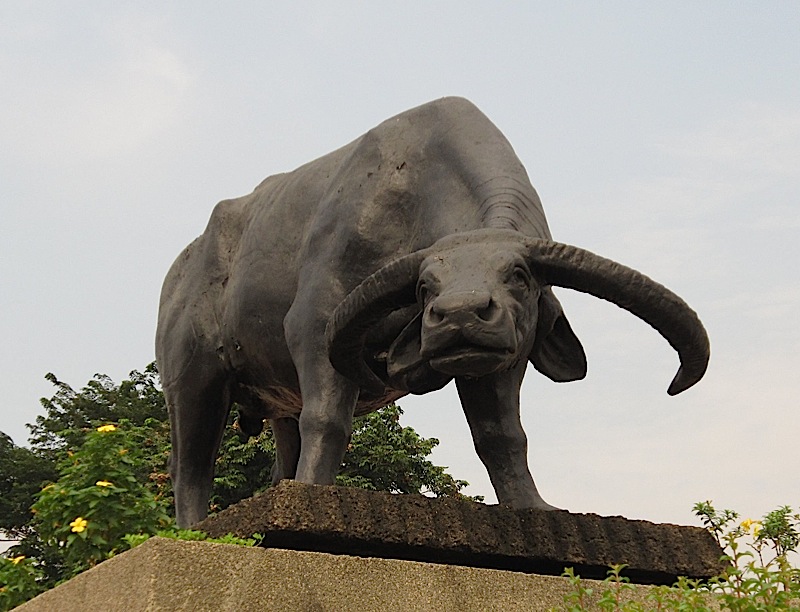
The tamaraw (Bubalus mindorensis), with its V-shaped horns, is the only bovine endemic to the Philippines, and is found only in the island of Mindoro. In the century since Mindoro was first settled, the tamaraw population in the island has been reduced drastically, and it is now classified in the IUCN Red List as critically endangered.
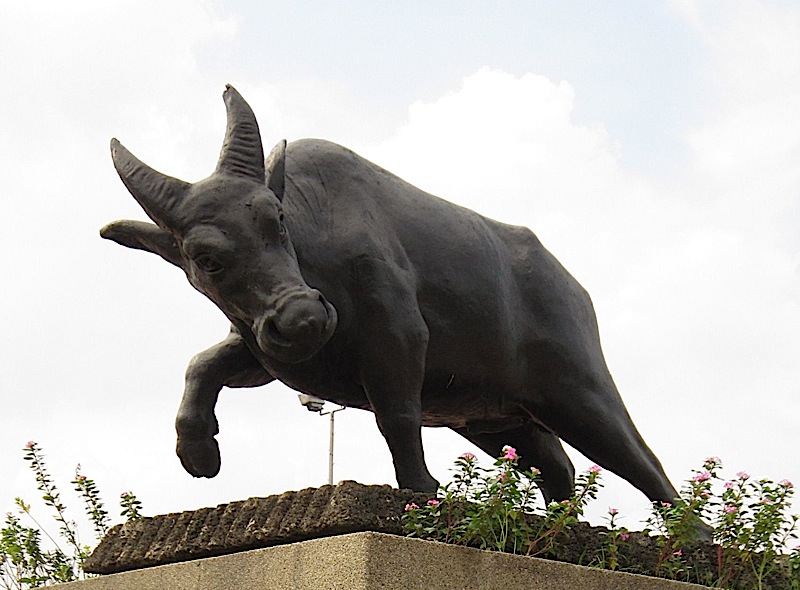

The tamaraw (Bubalus mindorensis), with its V-shaped horns, is the only bovine endemic to the Philippines, and is found only in the island of Mindoro. In the century since Mindoro was first settled, the tamaraw population in the island has been reduced drastically, and it is now classified in the IUCN Red List as critically endangered.

May 20, 2011
See-through
I've never eaten at Uncle Cheffy, which apparently specializes in brick oven cooking. This is their branch at Burgos Circle in Bonifacio Global City (also known as BGC or The Fort). I just like the transparent awning.


May 19, 2011
The Titanic
That's the nickname given by the students and faculty of the Ateneo Professional Schools to the diamond-shaped bridges crossing the central atrium of the Rockwell Campus building. They do look a bit like a ship's prow, especially from the fourth floor lobby.


May 18, 2011
Mind the gap
Not all of the kalesas remaining in Metro Manila are for tourist use only. Some districts of the City of Manila still allow them as public transportation, most notably in Binondo, Manila's Chinatown. In fact, one must take care when walking in its streets—look where you're stepping!

Unfortunately, just like our people, the horses also suffer terribly from the effects of poverty.


Unfortunately, just like our people, the horses also suffer terribly from the effects of poverty.

May 17, 2011
MMMoody
Bukal ng Tipan is situated on a hilltop (Maryhill) and has commanding views of the towns of Rizal Province and the cities of Metro Manila (MM). From this height, the skyscrapers of the cities of Pasig, Makati and Taguig suddenly look quite puny.
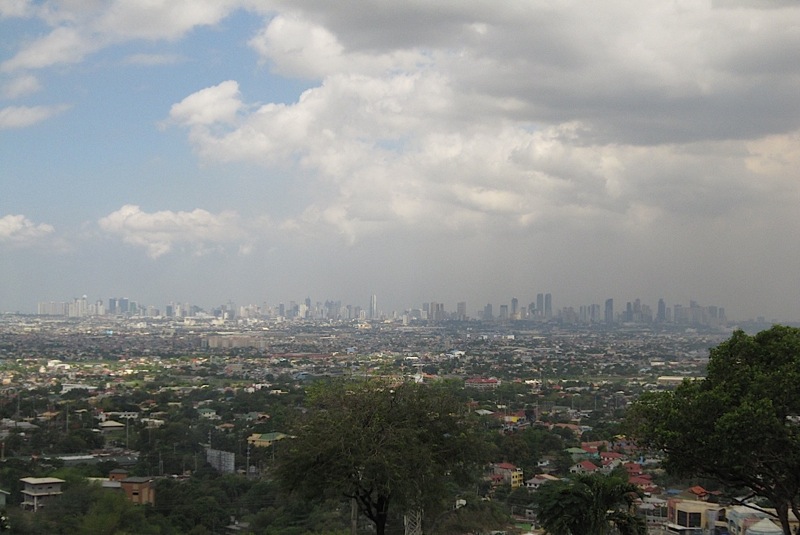
With the backlighting provided by a setting sun, one can even see the skyscrapers of distant Manila and Pasay cities.
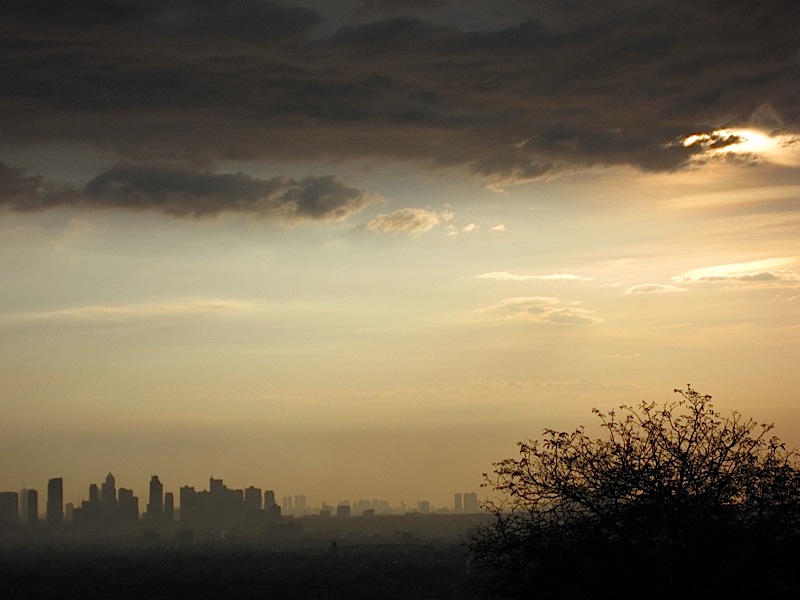
Our weather has been really strange, with strong rains—and even a typhoon, Bebeng (Aere)—in the middle of what is supposed to be our summer. Combined with Metro Manila's air pollution, one can hardly see the metro during an overcast day.
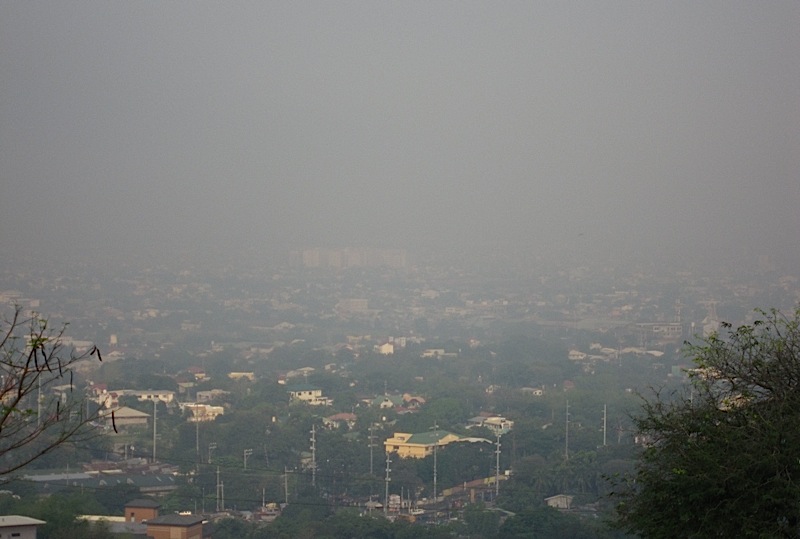

With the backlighting provided by a setting sun, one can even see the skyscrapers of distant Manila and Pasay cities.

Our weather has been really strange, with strong rains—and even a typhoon, Bebeng (Aere)—in the middle of what is supposed to be our summer. Combined with Metro Manila's air pollution, one can hardly see the metro during an overcast day.

May 16, 2011
Renewal
Our three-day spiritual retreat this year was held at Bukal ng Tipan (literally, bukal means "spring" and tipan means "meeting" and the sense of the phrase is "wellspring of community"), a retreat house and spirituality center in the town of Taytay in Rizal province run by the Congregatio Immaculati Cordis Mariae (CICM, Congregation of the Immaculate Heart of Mary).

The most striking feature of the building is its glass-enclosed spiral staircase with four story-high posts hung with capiz shell lanterns.

More than the building, however, the true gift of Bukal ng Tipan is its profusion of trees and plants, with this magnificent acacia tree dominating the center of the garden.


The most striking feature of the building is its glass-enclosed spiral staircase with four story-high posts hung with capiz shell lanterns.

More than the building, however, the true gift of Bukal ng Tipan is its profusion of trees and plants, with this magnificent acacia tree dominating the center of the garden.

May 15, 2011
Blue glow
The Picadilly Star Corporate Center, a 26-story office building in Bonifacio Global City (BGC), isn't particularly eye-catching during the day, but it is at night, especially when one is looking up.
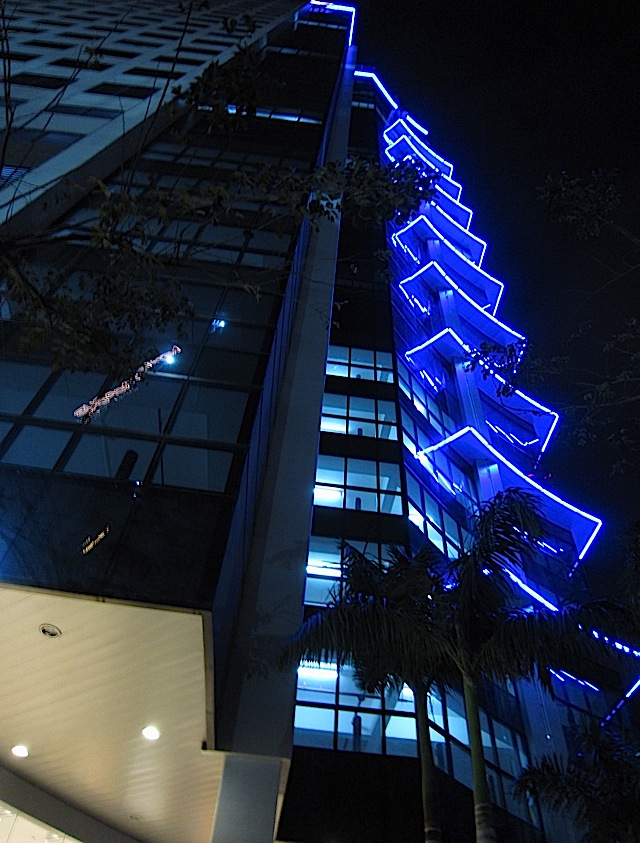

May 14, 2011
On the wall
The Spanish era walls of Intramuros are wide enough in certain areas to accommodate a simple stage for public cultural presentations organized by the Intramuros Administration.
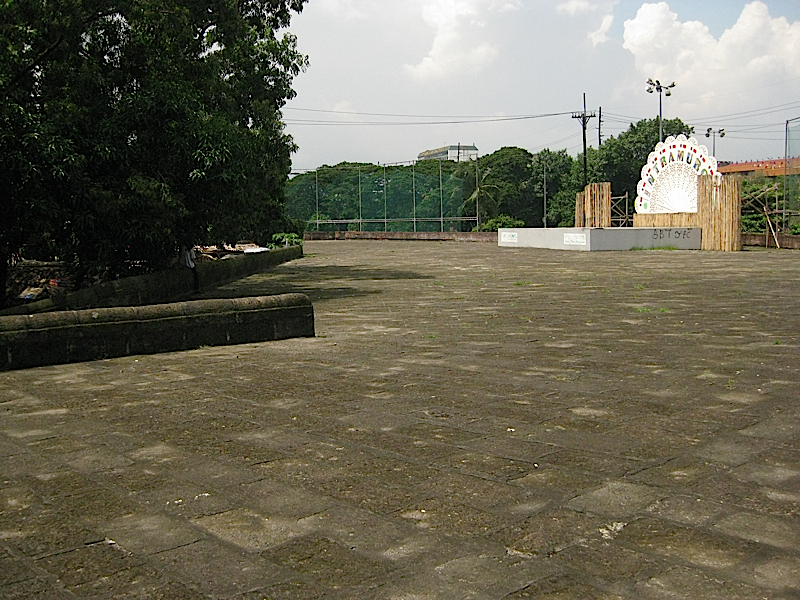

May 13, 2011
Hold on for dear life
Several years ago, Metro Manila's traffic enforcers were told to be strict against people hanging on to the back of jeepneys, what we call "sabit." But with cops no longer enforcing that rule (I'm not even sure if it was a law or not), commuters are back to their old ways. And no, not all the sabit you will see in our streets are getting a free ride; most of them actually pay the fare.

This was taken through the windshield of our car, so I apologize for the reflections which make the picture look fuzzy.

This was taken through the windshield of our car, so I apologize for the reflections which make the picture look fuzzy.
May 12, 2011
Loyal to Loyola
Working as I do at the Ateneo de Manila University, this was one photo opportunity that I couldn't pass up. The Jesuits in the Philippines used to have an elementary and high school in San Pablo City named Ateneo de San Pablo. They closed it in 1978, turned it over to the Diocese of San Pablo, and the new diocesan school was named Liceo de San Pablo. The now homeless Ateneo de San Pablo alumni set up a foundation which, in 2006, opened the doors of a new private school named Academia de San Ignacio de Loyola. If I'm not mistaken, the animal on their shield is one of the wolves of the Loyola coat-of-arms.
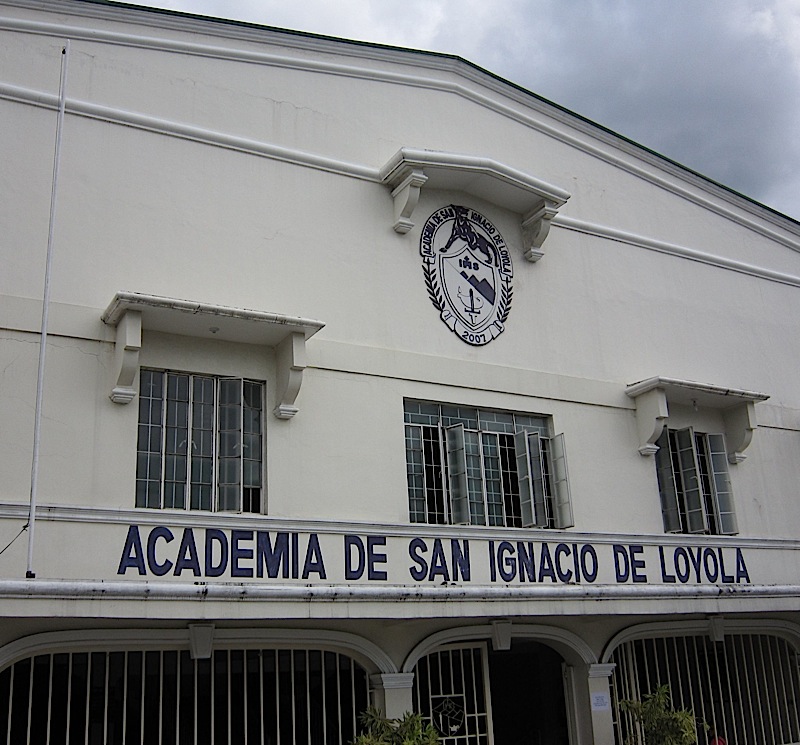

May 11, 2011
The lake caused by selfishness
While most of our officemates slept off our delicious lunch back at Casa San Pablo, four of us decided to go on a drive around Lake Sampaloc (Tamarind). Though it is only one square kilometer, it is the largest of the seven interconnected freshwater crater lakes of San Pablo and is located right in the heart of the city.
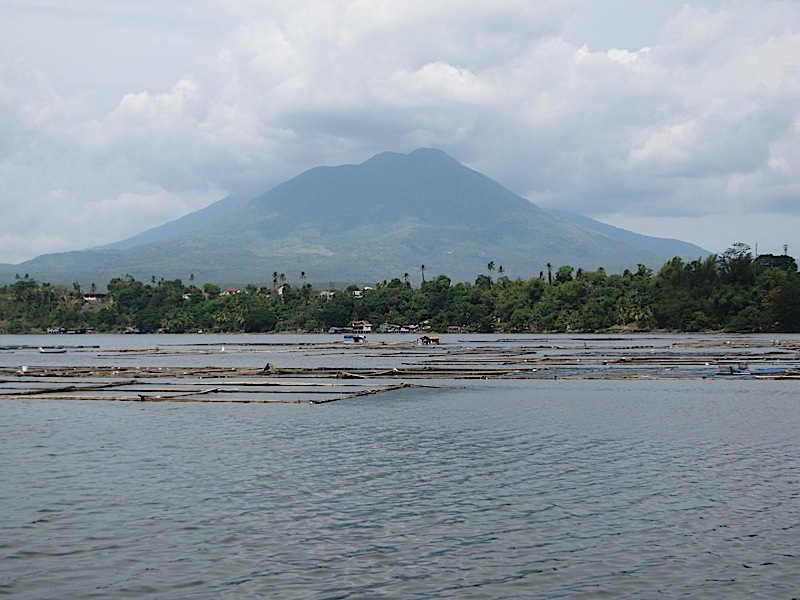
Mount Banahaw looms over one side of the lake and there are many smaller hills all around it.
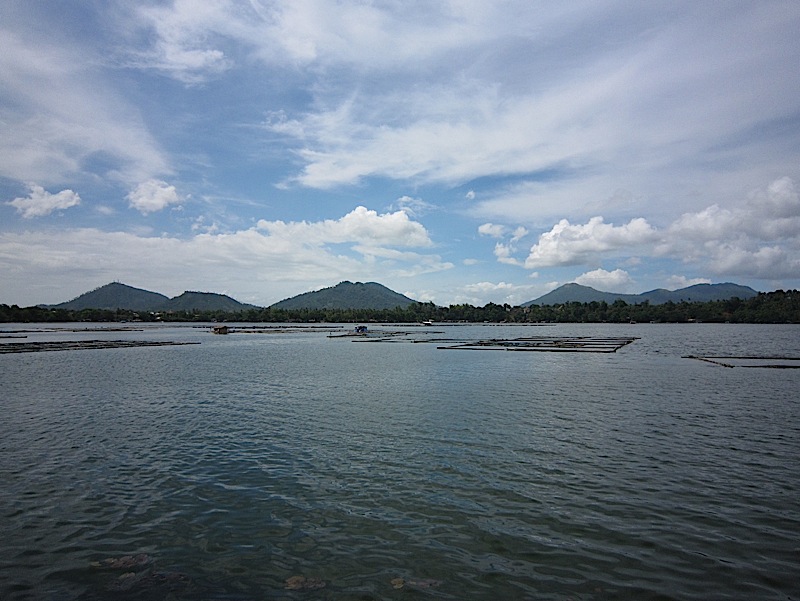
With overcrowded fish pens studding the lake, the overuse of commercial fish feed, and numerous makeshift huts without proper waste disposal systems on stilts along its shores, Lake Sampaloc is considered threatened and needs rehabilitation. The Friends of the Seven Lakes Foundation is working towards that and educating the communities around the lake, but I think that the city government of San Pablo also has to be stricter in implementing environmental and building laws in the areas around the lakes.

In case you're wondering about my title, it is based on the Legend of Lake Sampaloc.

Mount Banahaw looms over one side of the lake and there are many smaller hills all around it.

With overcrowded fish pens studding the lake, the overuse of commercial fish feed, and numerous makeshift huts without proper waste disposal systems on stilts along its shores, Lake Sampaloc is considered threatened and needs rehabilitation. The Friends of the Seven Lakes Foundation is working towards that and educating the communities around the lake, but I think that the city government of San Pablo also has to be stricter in implementing environmental and building laws in the areas around the lakes.

In case you're wondering about my title, it is based on the Legend of Lake Sampaloc.
May 10, 2011
Charm
Aside from Mrs. Vinya Gomez Alcantara, what I found most charming about Casa San Pablo were the sculptures and antique furniture and knick-knacks found in, out and about the guest rooms and cottages.

Charcoal clothes irons used as banisters.

A serenely smiling sun greets visitors near the entrance.

A fish on a balcony facing the path to the swimming pool.
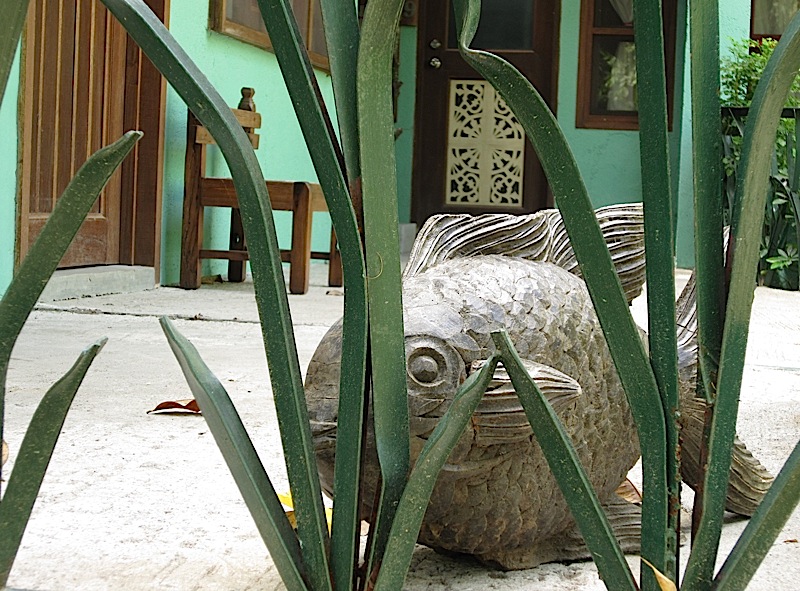
A young boy starting to fall asleep on a bench. Whoever the artist was, I think he captured well our experience of Casa San Pablo.
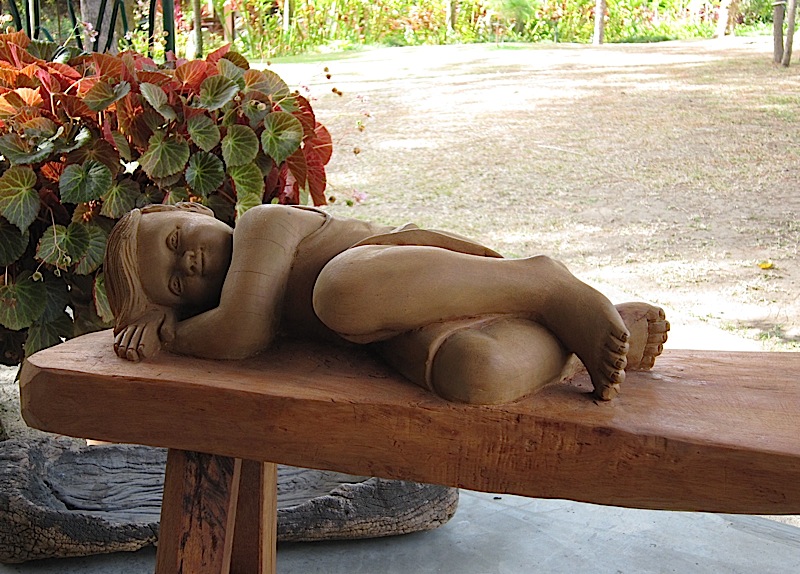

Charcoal clothes irons used as banisters.

A serenely smiling sun greets visitors near the entrance.

A fish on a balcony facing the path to the swimming pool.

A young boy starting to fall asleep on a bench. Whoever the artist was, I think he captured well our experience of Casa San Pablo.

May 9, 2011
R&R
Welcome to Casa San Pablo, a garden resort in San Pablo City in the province of Laguna, where our office had its annual R&R last Friday.

Before WWII, it was a 7-hectare coconut plantation owned by the Azores-Gomez family. After it was divided among the six siblings, one daughter cut down all the coconut trees in her land and planted fruit and pine trees in their stead. Now, her son runs a small but lovely resort and artists' haven on the same land.
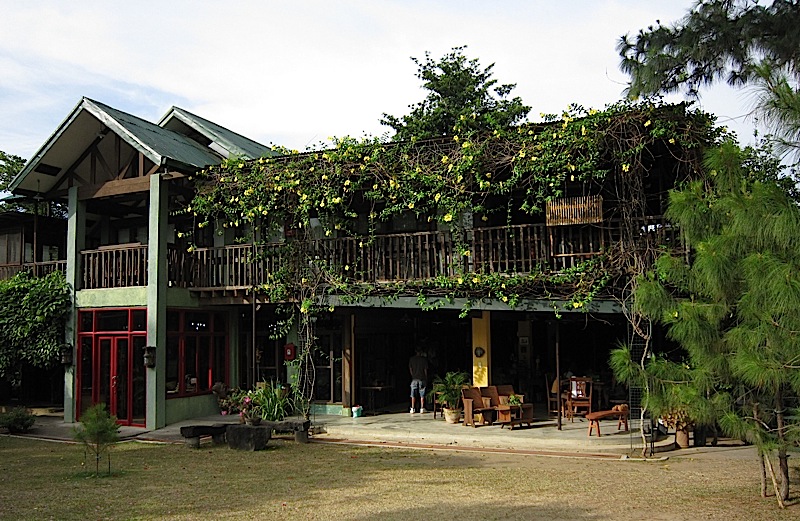
Vinya Gomez Alcantara, now in her 70s—and the funniest, most charming and life-loving widow I have ever met—still lives in the same compound where she grew up, in a gorgeous house just across the lawn from the guest cottages.
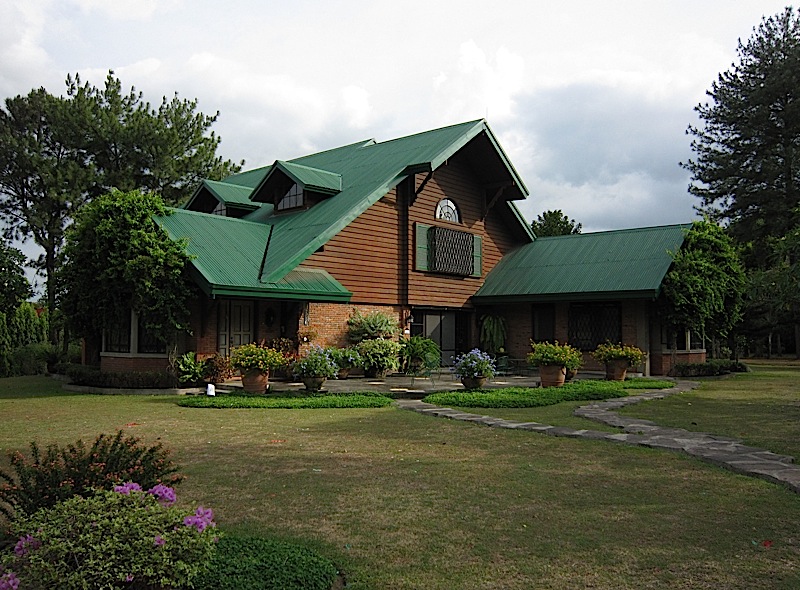

Before WWII, it was a 7-hectare coconut plantation owned by the Azores-Gomez family. After it was divided among the six siblings, one daughter cut down all the coconut trees in her land and planted fruit and pine trees in their stead. Now, her son runs a small but lovely resort and artists' haven on the same land.

Vinya Gomez Alcantara, now in her 70s—and the funniest, most charming and life-loving widow I have ever met—still lives in the same compound where she grew up, in a gorgeous house just across the lawn from the guest cottages.

May 8, 2011
The first cross
The "Planting of the First Cross" by Philippine National Artist for Painting Vicente S. Manansala (b. 22 January 1910, d. 22 August 1981) is a cherished part of the National Museum's visual arts collection. From the museum's notes:

- The painting depicts the planting of the cross in Cebu in 1521 with Ferdinand Magellan, Spanish soldiers and the natives with intricate tattoos known as pintados. The original cross can still be found in a special kiosk in Cebu City. This mural painting is one of the best representations of historical artwork in the collection. Manansala’s rendition is an amalgamation of the traditional and modern techniques in painting. It also manifests his mastery of transparent cubism. The artwork was commissioned by the national government in celebration of the 400 years of Philippine Christianization held in Cebu in 1965.

May 7, 2011
Wheel of life
The colorful, playful, paper cut-out style artwork in the second floor lobby of the Philippine Educational Theater Association's PETA-PHINMA Theater provides a whimsical contrast to the equally colorful but much more serious mural on its ground floor.
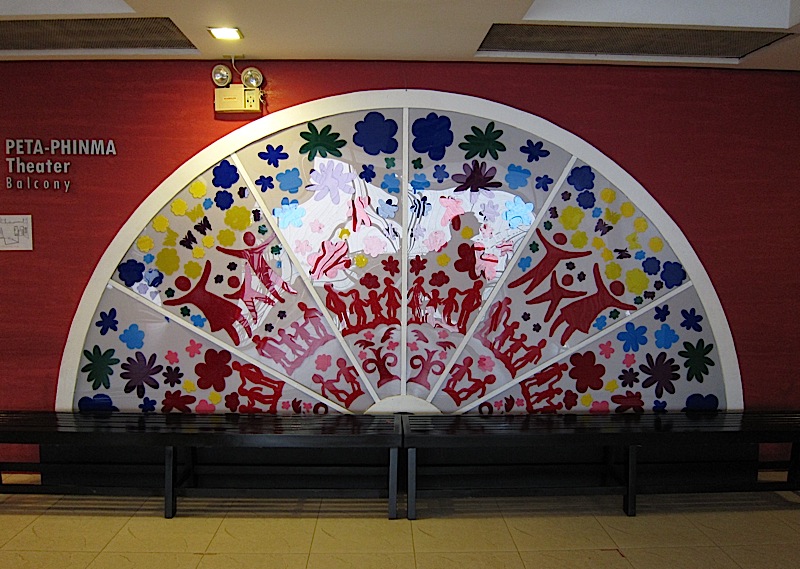

May 6, 2011
Roar!
The dinosaur playground at the Rizal Park. It is at the side of the park nearest Taft Avenue (named after William Howard Taft) and the Light Rail Transit (LRT) line 1.


May 5, 2011
Asong Pinoy
A new sculpture in the plaza of Eastwood Mall pays tribute to the Aspin, short for Asong Pinoy or Filipino Dog. The Philippine native dog was called Askal—Asong Kalye or Street Dog—until the Philippine Animal Welfare Society (PAWS) decided to take up its cause more aggressively, which required a special public relations campaign and a new, more socially acceptable name for this short-haired, medium-sized hunting dog. The plaque on the base reads:
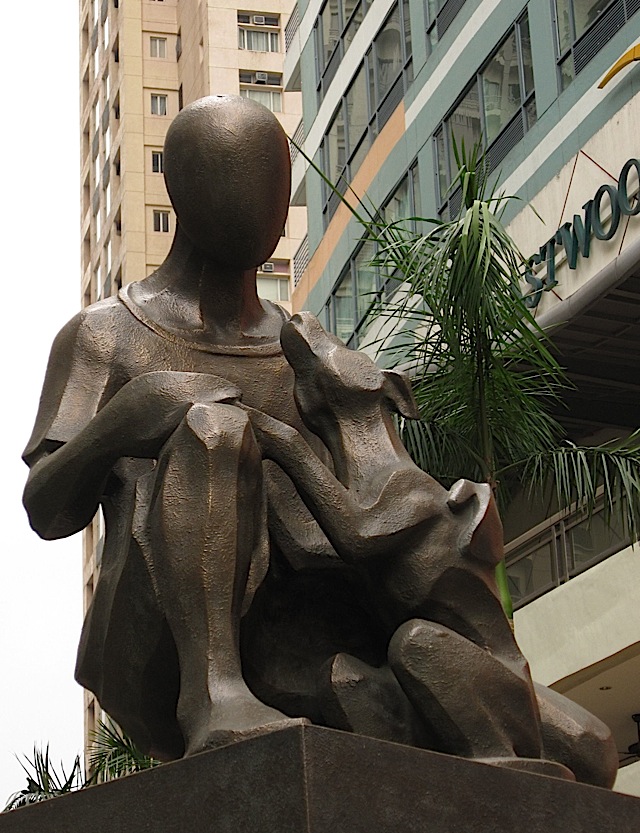
Silent Companion
By Seb Chua
In honor of the "Aspin", the Filipino dog… Companion, playmate, protector, friend
Without words, Beyond words…
Living in his own homeland, yet often homeless.
Seen everywhere, yet overlooked,
Voiceless and invisible.
The Aspin dreams of the day he will find a safe, loving home.
He looks up to a human, and hopes for humanity.
Will they see him and speak for him?
To all who give voice to the Aspin,
Who have called his name and welcomed him into their family,
Share in this quiet tribute.

May 4, 2011
New beginnings, part 3
Let there be lights in the vault of heaven. The central chandelier at the new Commonwealth branch of the Loyola Memorial Chapels, where the wake of the mother of one of my dearest friends was held.
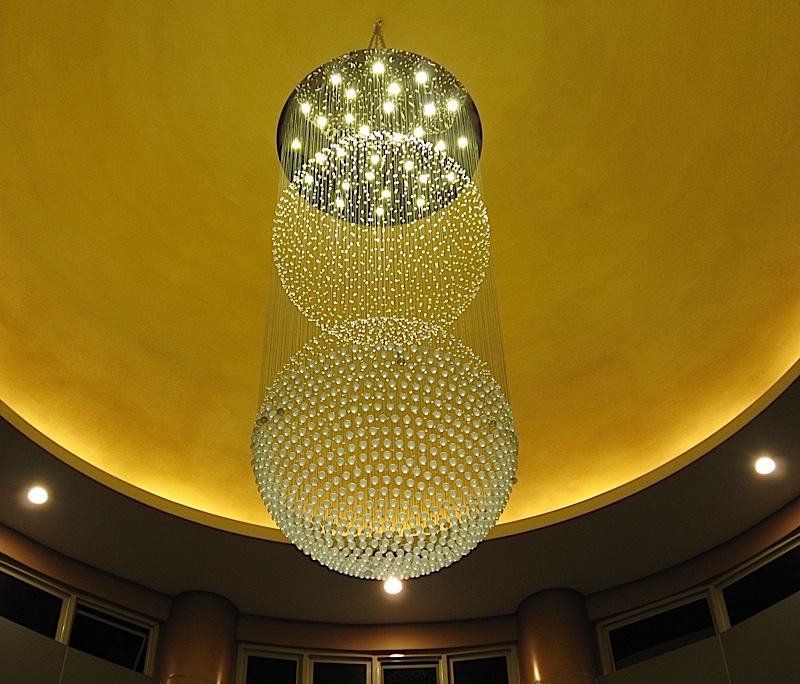

May 3, 2011
New beginnings, part 2
Fired with hope. After 18 years of leading the Ateneo de Manila University as its longest-serving president, Fr. Bienvenido F. Nebres, SJ ("Fr. Ben" to many of us) is retiring. During his 71st birthday, the staff and the communities of his many social outreach projects paid tribute to the man whose battle cry is "nation-building." The name of the event? Benfire, of course.
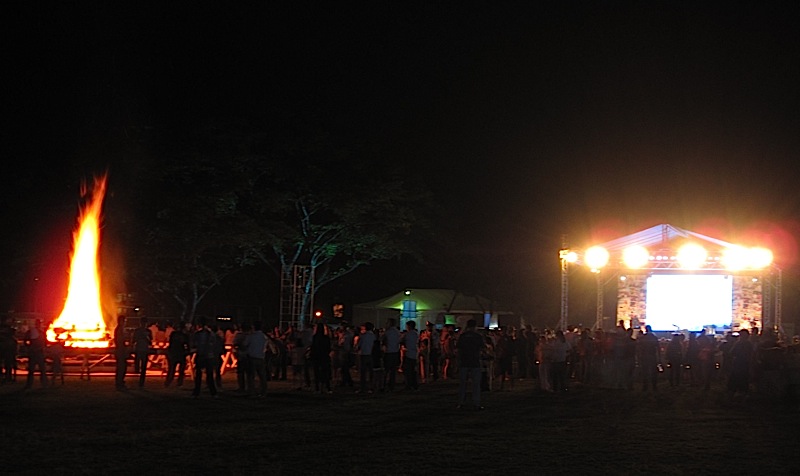

May 2, 2011
New beginnings, part 1
Canadian Geese. The Goose Station (a play on "dégustation" and the fact that the chef-owners love foie gras and feature it in many of their dishes) at Bonifacio Global City, where our college group had a despedida dinner for our dearest Vic and Cecile who have migrated to Canada in search of a better future for their children.
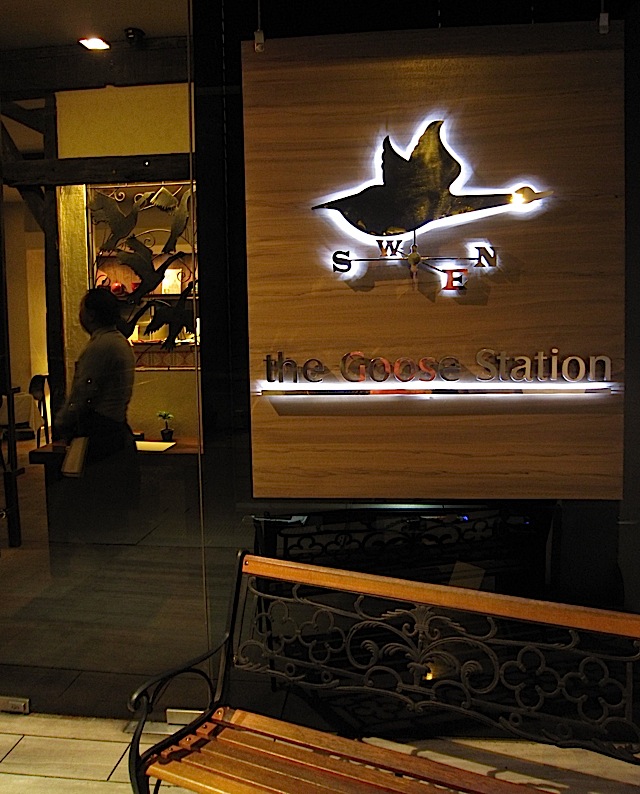

Subscribe to:
Posts (Atom)